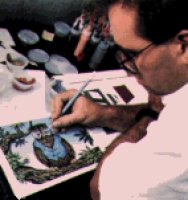 |
 |
The new and updated version of the Sierra Creative Interpreter was named SCI 1, and the enhancements were big. First of all, the new version supported 256-color images. Improvements in hardware made the old polygon background technique unnecessary, so background scenes were now stored as regular bitmaps. This paved the way for a dramatic improvement in graphical quality of the games. The background scenes would no longer be drawn on a computer, but hand-painted in high detail and scanned into a computer for additional editing and touch-up. Also, a video recording studio was built next to the old Sierra facilities where captions of live actors were filmed and used as base material for the animations of in-game characters, enabling them to look more realistic. But the most dramatic technological change was the user interface. With possible future game applications such as CDI, a CD game device to be attached to a television set, thought to become the next big thing, computer gaming would be brought to non-computer users. The use of a keyboard to type in commands in the games was thought to make it too difficult for these people to play the games, so a new, non-keyboard interface had to be developed. Roberta thought about this and realized that the actions necessary in an adventure game could be reduced to a few basic commands. The new interpreter therefore scrapped the keyboard interface entirely and replaced it with a mouse-only interface where the user could select from a limited number of general action symbols, such as an eye for "look", a hand for "take" or "touch" and a mouth for "speak". By selecting one of these symbols, the mouse pointer would turn into that symbol and the player could click on any spot on the screen to perform the desired action on the thing or creature located there. This somewhat limited the options for the player, something that a few seasoned adventure game players complained about, but it also made the game easier to play, thus making it easier for inexperienced players to get into the game. It also made game design a lot easier as the game designers no longer had to figure out what type of commands the players would try to write in the game. After this change, the typing interface in graphical adventure games quickly died away, never to return. SCI 1 also improved the sound capabilities of Sierra games a lot. Support for digital sound samples were added, and this enabled for much greater sound effects than in previous SCI games. Another SCI 1 improvement was the "intelligent pathing" technique, a program function that calculated a path between two points on the screen with obstacles between them, so the player didn't have to direct the game character around the obstacles manually.
 |
 |
The new graphic capabilities of SCI 1 enabled the game to look a lot better, in fact it was considered to look stunningly beautiful compared to most other games of its time. Apart from the hand-painted backgrounds and animation based on motion-captured actors, the game also featured close-ups of the faces of the game characters as they spoke.
King's Quest V: Absence Makes the Heart Go Yonder was initially released in two versions: one 16-color version supporting EGA, MCGA, VGA and Tandy graphics, and one 256-color version supporting MCGA and VGA only. The game was shipped on 3.5'' floppy disks as well as 5.25'' floppy disks and could be played entirely from the floppies, partly from the hard drive or entirely from the hard drive, resulting in a rather complicated installation procedure with multiple options. In an attempt to expand in Europe and the french-speaking part of Canada, a version of the game translated into french was also released. After King's Quest V, most of Sierra's adventure games would be translated into other languages.
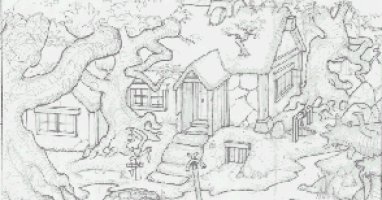 |
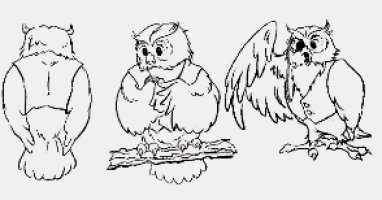 |
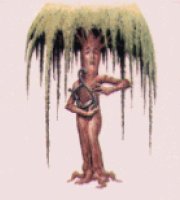 |
 |
Even before the release of King's Quest V, Roberta had come up with an idea for the next game in the series, so in the end of the game, the background setting for the next game in the series was made.
In 1991, Konami also made a conversion of the game for the Nintendo Entertainment System (NES). It had inferior graphics and control ability, but was still very true to the original game.
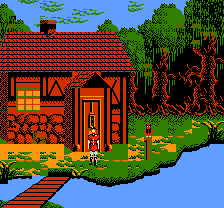 |
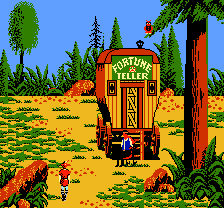 |